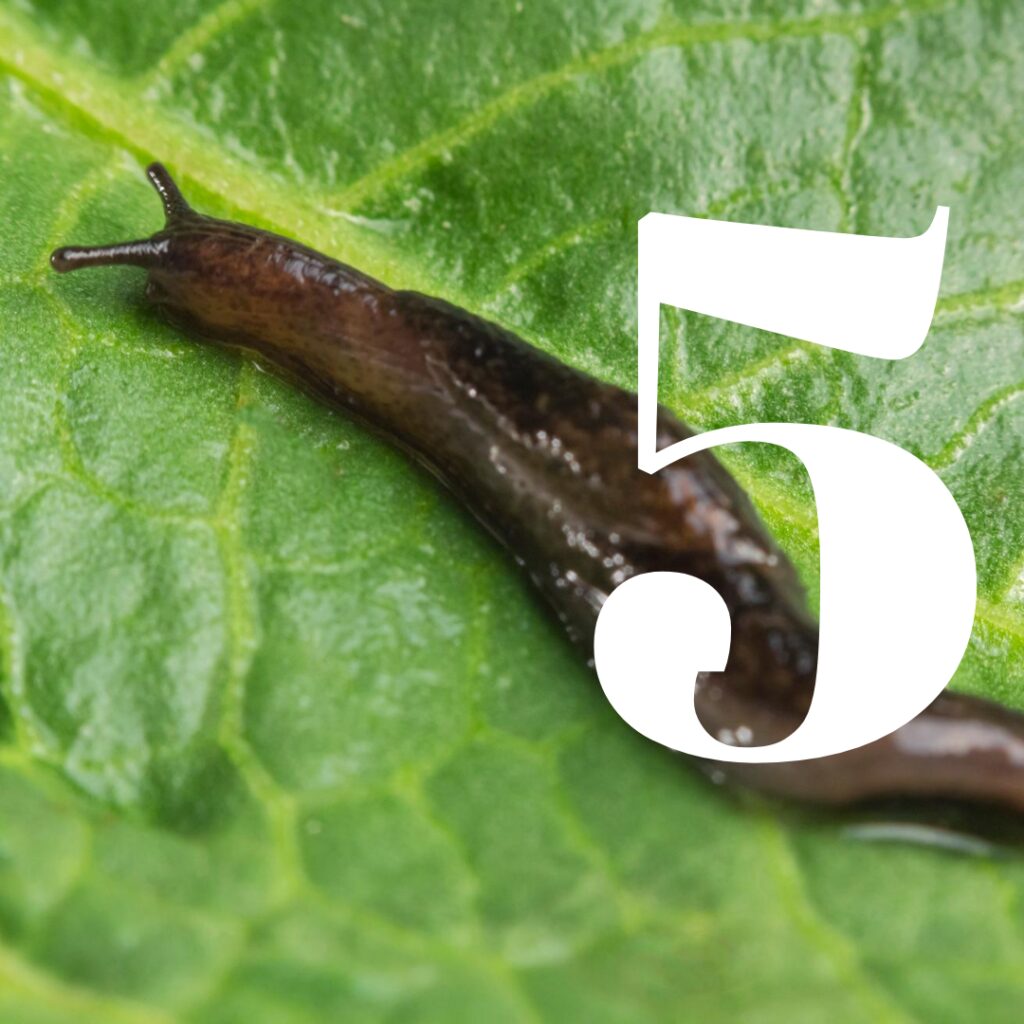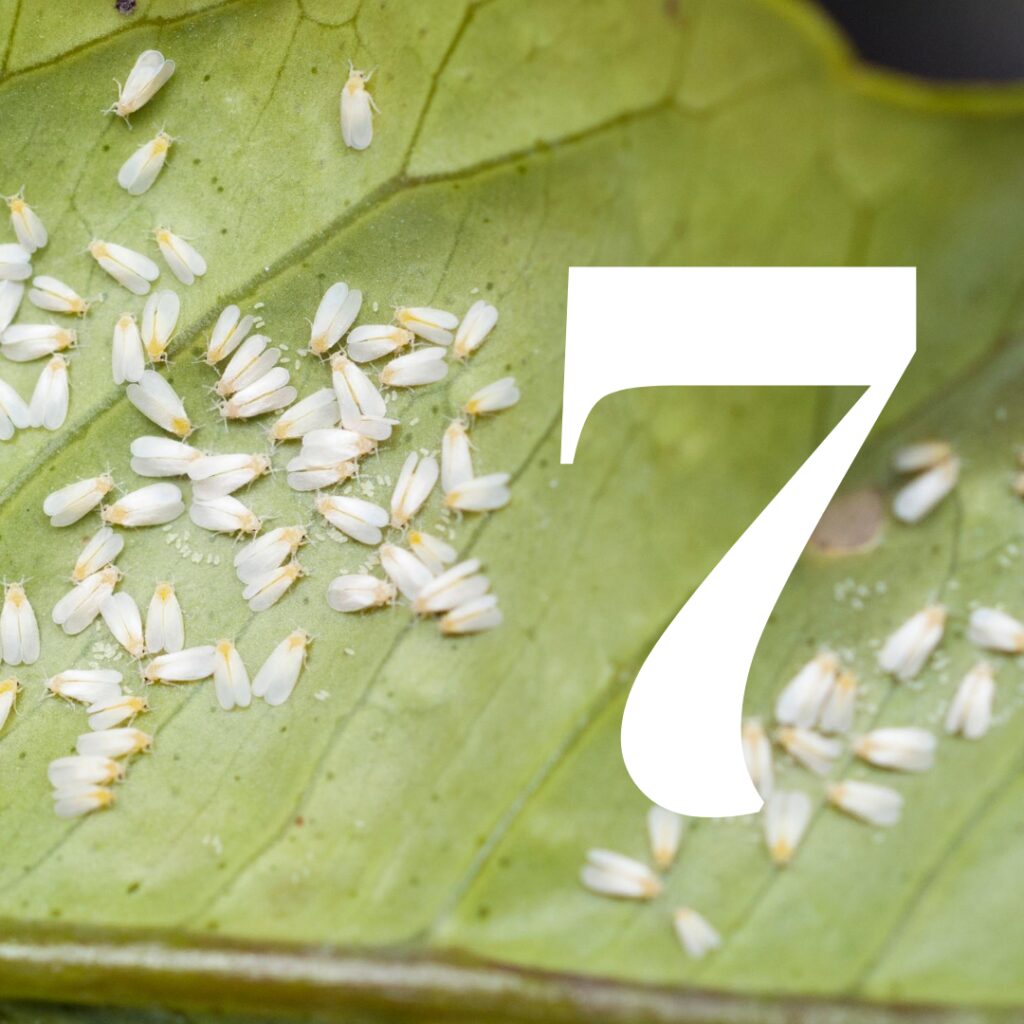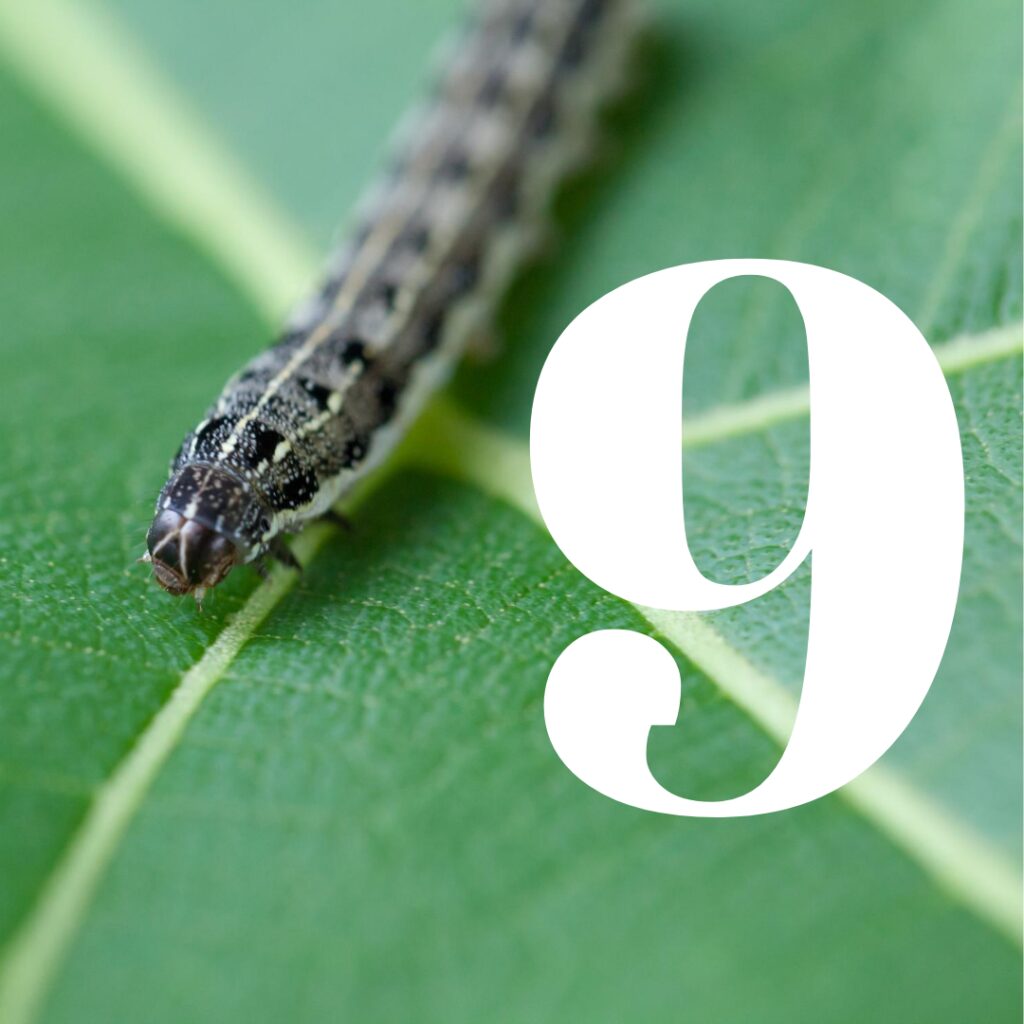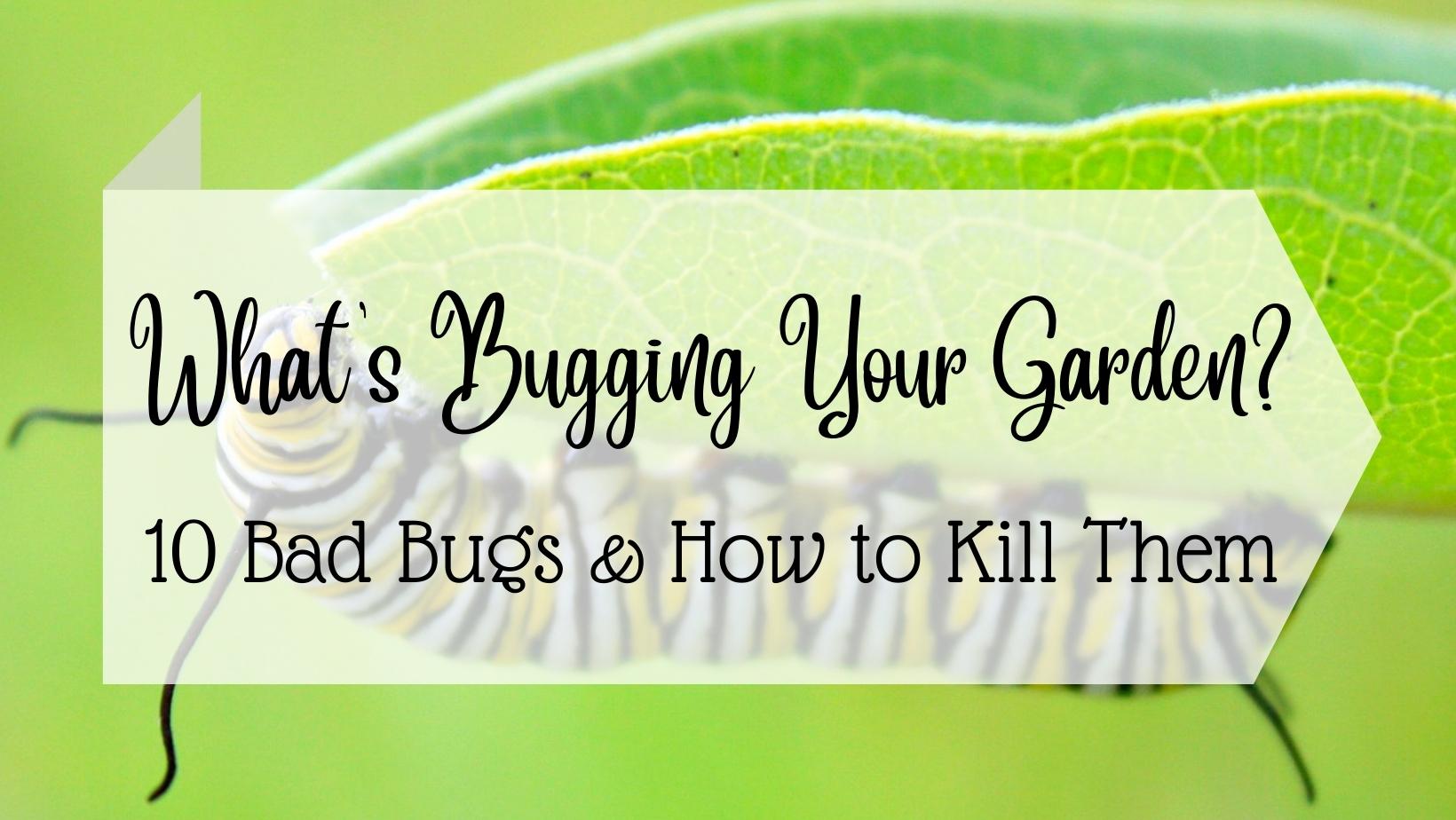
Aphids
These destructive critters have over 4000 species. Though all have spindle-shaped bodies and antennae, they come in a variety of colors including green, black, yellow, and red.
They haunt both indoor and outdoor plants; you can find them in clusters, under leaves, and on new plant growth. Identify damage by the sticky honeydew that they secrete as they feed. This causes more issues by attracting ants and causes mold.
On your own, you can spray them off with water, prune infected stems, or apply horticultural oils. Another option is to spray hot-pepper or garlic repellents, which aphids despise.

Stink Bugs
You can identify these annoyances by their brown color, shield-shaped bodies, and antennae.
If you chose to terminate them, be sure not to do it inside, since their defense mechanism is to release a foul odor.
They feed on leaves, stems, and fruits. Damage is identifiable by tiny holes surrounded by discoloration.
Prevent stink bugs by removing excess debris and overgrowth. Kaolin clay can be applied to leaves of your plants to impede bugs from laying eggs.

Spider Mites
Though these pests are too small to be seen with the unaided eye, they cause big damage to almost any type of vegetation.
A fine, silk web on the underside of your plant may be an indication that spider mites have commandeered it.
These bugs suck the plant juices from the leaves and stems, leaving behind brown spots. In large quantities, they can cause the leaves of a plant to wither and fall off.
Direct removal options include neem oil, miticides, and insecticidal oil.

Scale Insects
You can find the females covered in waxy protectors on leaves and stems of ornamental plants, fruit trees, and houseplants. They will suck the sap and subsequently the nutrients from your plants.
If left untreated, the plants will eventually yellow, wither, and die.
To remove the scale, prune off infected areas, dab with alcohol-soaked swabs, or scrub the plant with soapy water. For larger infections, neem oil is the preferred organic option.

Slugs and Snails
Probably the most notorious garden nuisance is the slug. Long, soft, and slimy, these bugs slither through your garden, feasting on leaves, stems, roots, and flowers while leaving a trail of goo wherever they go.
You can trap and drown slugs by leaving a shallow bowl of beer in the garden overnight. If you find a slug during the day, a sprinkle of salt will take care of it. Finally, to discourage slugs from entering in the first place, sprinkle crushed eggshells, sand, wood ashes, or seashells around your garden or plant.
Slugs only like to feast at night in moist conditions, so watering in the morning will give the soil time to dry out before the feeding begins.

Japanese Beetles
The infamous Japanese Beetle has terrorized everything east of the Mississippi. They are large blue, green, and bronze predators that feast on leaves and flowers, leaving nothing behind. Their grub chew on the roots of grass and plants having equally as disastrous effects.
To prevent the beetle from laying eggs on the plant, spray insecticidal soap on the stems.
If you have a grub infestation in the surrounding soil, an application of nematodes may help, but take a while to fully build up and do their job.
To terminate the adult beetle, remove them from the plant and drop into a jar of soap. They are more active during the day, so the morning is probably the best time to catch them. Baited traps can also be used when you cannot locate the intruder.

White Flies
These are tiny white bugs congregate on the leaves of plants and suck out the nutrients, stunting growth, and weakening plants. Like aphids, they leave behind a sticky honeydew that causes fungal diseases more detrimental than a wilted leaf.
To prevent the flies from landing on your plant, sticky guards can trap them and prevent them from laying eggs.
Removal may be as simple as washing the flies off with a hose and scrubbing with insecticidal soap. You can take preventative measures by applying watered down dish soap to protect your plants.

Cucumber Beetles
These critters have an intriguing yellow and black design, but they are detrimental to squash and vegetable plants. Depending on the species, they can be striped or spotted. They burrow holes into leaves and flowers that lead to bacterial wilt that kills your harvest.
There are some species of cucumber that are resistant to this beetle, but if you have one that is not, there are steps that can be taken to combat this pesky bug:
To prevent the beetles from laying eggs, mulch your plants with loose materials such as straw or hay. In addition, spinosad organic pesticides can help fight any attacks.

Cutworms
These fat larvae feed on plants at night and hide during the day, making it difficult to locate them. However, they normally attack the stems, so if your plant is falling over, it is a sign that you have an infestation and need to take action.
When fully active in early summer, they can completely consume your new plantings, so you may want to wait until your plants have grown a little before transplanting them into the ground.
You may need to protect your newly planted greenery from cutworms using plastic or cardboard collars. Although robins like to feast on these bugs, removing them by hand may be necessary when the birds can’t do the job.

Caterpillars
Although caterpillars eventually transform into beautiful butterflies, they are menaces in their early stages. Long and skinny and you can find these worm-like bugs inching their way across vegetables, ornamental plants, and trees. They tunnel through stems and fruits and chew on leaves.
There is not much you can do for caterpillars but hope that natural predators take care of them. Other than that, you can remove them by hand when you see one on your plant and be sure to harvest your fruits and vegetables before they have a chance to snack on them.
Friendly Bugs
Lady beetles, praying mantis, ladybugs, assassin bugs, and lacewings are natural predators of many pests that plague your plants. In order to attract them to your yard, consider planting a few of these perennials, herbs, and other plants in your garden:



Leave a Comment
You must be logged in to post a comment.